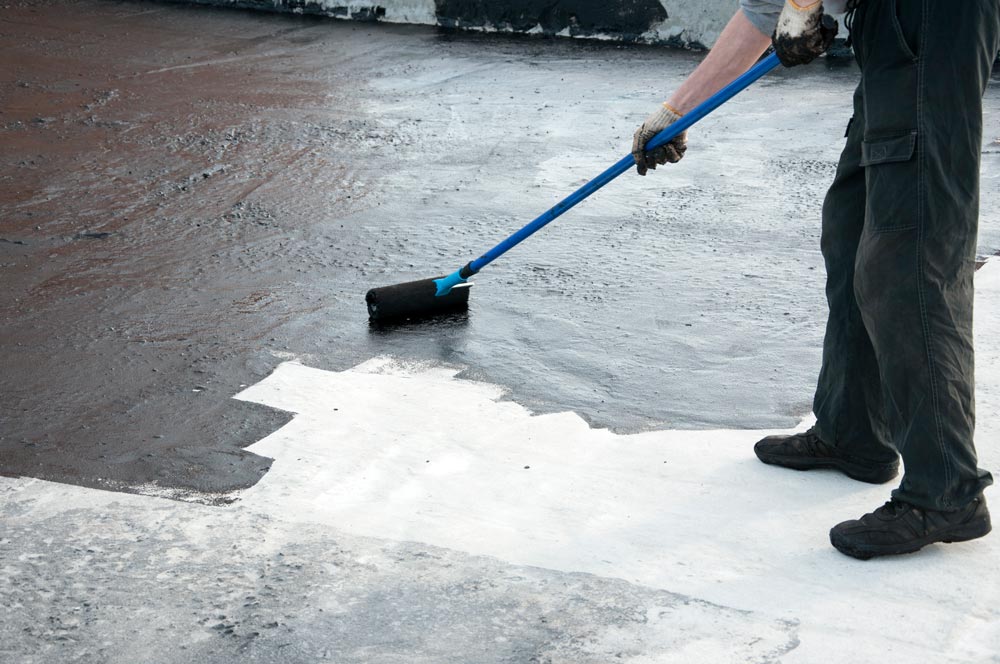
The garage floor requires special cares and its tune-up is as important as the election of the paint for your home. Some time ago, we explained you how to prepare your swimming-pool for summer and which paint to choose; on this occasion, we devote this section to the garage floor.
The garage floor requires special cares and its tune-up is as important as the election of the paint for your home. Some time ago, we explained you how to prepare your swimming-pool for summer and which paint to choose; on this occasion, we devote this section to the garage floor.
Garage is a part of the house which is usually exposed to moisture, saltpeter, oil stains and distress generated by the vehicle`s tires. Choosing the most suitable product for its painting and maintenance will give as result a clean, cared and resistant space.
Before starting, it is important to define the floor conditions: if it is in good or bad conditions, if it had been painted previously, etc. The steps to follow and the products to employ will depend on that assessment.
The first thing to do is to clean the floor exhaustively, to remove the rests of paint if existing, to seal any cracks, to repair irregularities and to check the existence of moisture. With this aim, the most suitable products will be employed in each case. Let’s analyze some typical situations and how to proceed:
- If the floor is made of concrete or cement of high porosity: sweep the surface well to eliminate dust. In case of a very dirty floor, apply pressurized water and brush the stains using a degreasing soap. Next, rinse the surface till it is completely clean. Let the floor dry (24 hours at least). Once finished, apply the primer.
- If the floor is made of concrete or cement of low or non-existing porosity: sweep the surface well to eliminate dust. Clean the floor up with a solution of etching and water, which will help to open the pore and remove tough dirt. Next, eliminate any trace of acid with clear water. Let it dry 24 hours at least.
- If the floor has been already painted and presents poor conditions (chips, distress painting, etc.): it is recommendable to sand slightly the whole surface. Next, vacuum the floor. If any rest of dirt remains, clean it up with a degreasing soap and pressurized water for a perfect rinse. Let it dry 24 hours at least.
- If the floor has been already painted and presents good conditions: it will be cleaned in depth with a brush and a solution of etching and water or with a degreasing soap; it will be rinsed with plenty of water and let dry 24 hours at least. In this case, no primer will be necessary and a finishing paint may be applied directly, having into account it must be the same nature as the precedent.
- If the floor presents bad conditions from wear, its repair will be carried out as described in the previous instructions. In case of chips, bulges, damped areas, etc., it is important to determine if moisture was already present in the floor before being painted.
- In case of tiny cracks: MACYPLAST FOR EXTERIOR USE MACYREX should be employed.
- In case of big cracks or irregularities: depending on the degree of depth, they may be repaired by applying a primer or by filling the cracks with TWO-COMPONENT PRIMER WF-213.
Once the floor is clean as a whistle, it is time to apply the primer. That constitutes an essential part of flooring, since its adhesion and attachment depends on that process, apart from being an important barrier against the appearance of capillary moisture.
The product must cover the concrete without being applied in excess and avoiding any film on the surface which may alter the properties of attachment of the finish coat. These are the recommended products:
- If the floor is made of concrete or cement of high porosity: INDUSTRIAL PRIMER WATER-EPOX.
- If the floor is made of concrete or cement of low or non-existing porosity: MULTIPURPOSE PRIMER EPOXY-WATER.
- If the floor has been already painted and presents poor conditions: MULTIPURPOSE PRIMER EPOXY-WATER.
- If the floor has been already painted and presents good conditions: no need of primer.
- In case of humidity higher than 5%: TWO-COMPONENT PRIMER WF-213 (FOR WET SUBSTRATES).
It is recommended to apply the first coat of finishing paint when the primer still presents a tacky touch. If you are not able to recognize it, you should wait 24-48 hours.
For interior garages, our WATER-BASED PAINT PARKING or WATER-EPOX INDUSTRIAL LINE should be employed. The latter is available in our tinting system, so any color can be chosen.

Pinturas Macy, S.A.
Ctra. Nacional 301, Km. 212,800
02630 La Roda (Albacete)
(0034) 967 44 07 12 · (0034) 967 44 00 16
Fax: (0034) 967 44 28 19
